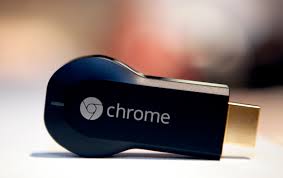 Back in July, Google announced the release of Chromecast — its latest pride and joy to come from the billion-dollar idea factory. The device, which is only about two inches long, works to stream video (or simply screens) from a computer, tablet, or phone, onto one’s TV. Basically, any television with an HDMI port can magically be turned into a smart TV of sorts. Easy, right? And unlike some of Google’s other releases, this one is surprisingly affordable. No subscription or ongoing fees — just a flat $35 to enjoy Chromecast for as many hours as the device will last.
Back in July, Google announced the release of Chromecast — its latest pride and joy to come from the billion-dollar idea factory. The device, which is only about two inches long, works to stream video (or simply screens) from a computer, tablet, or phone, onto one’s TV. Basically, any television with an HDMI port can magically be turned into a smart TV of sorts. Easy, right? And unlike some of Google’s other releases, this one is surprisingly affordable. No subscription or ongoing fees — just a flat $35 to enjoy Chromecast for as many hours as the device will last.
The Setup
Chromcast can be purchased at any local electronics store or even Amazon. Then all that’s required is to plug in the device, and set up the streaming medium from a website Google automatically displays on the TV. Once in place, users click a box in the top right-hand corner of the screen (the “cast” button), and can start viewing. Remember that YouTube video you wanted to show to an entire room of people? Size is no longer a limitation. Or when ready to view Hulu Plus’s “computer only” content, you now have the upper hand.
Other Perks
- Users can give their Chromecast a customized name.
- Though Chromecast is optimized for specific websites (like YouTube), any content can still be shown through tab mirroring.
- Content is streamed via the cloud, not from the device itself, so users are free to use the computer, tablet, or phone, for other tasks without interrupting their program.
- Chromecast can be setup for multiple devices at once — use whichever one’s the closest.
This brings us to the next question: How did we ever live without it? Seriously, think of all the online TV, movies, and clips we could have been watching. If Google has anything to say about it, we’ll no longer need cable subscriptions, and rather just a strong Internet connection and a fully charged computer.
Of course, there are a few flaws with the device. For instance, software developments are still being updated, and Chromecast isn’t compatible with older iOS or Windows versions. Plus, videos stream as they appear on the computer. On HDTVs, that means less than crisp quality, but considering all the perks, a slightly grainy picture seems like a small price to pay.


Leave a Reply
You must be logged in to post a comment.